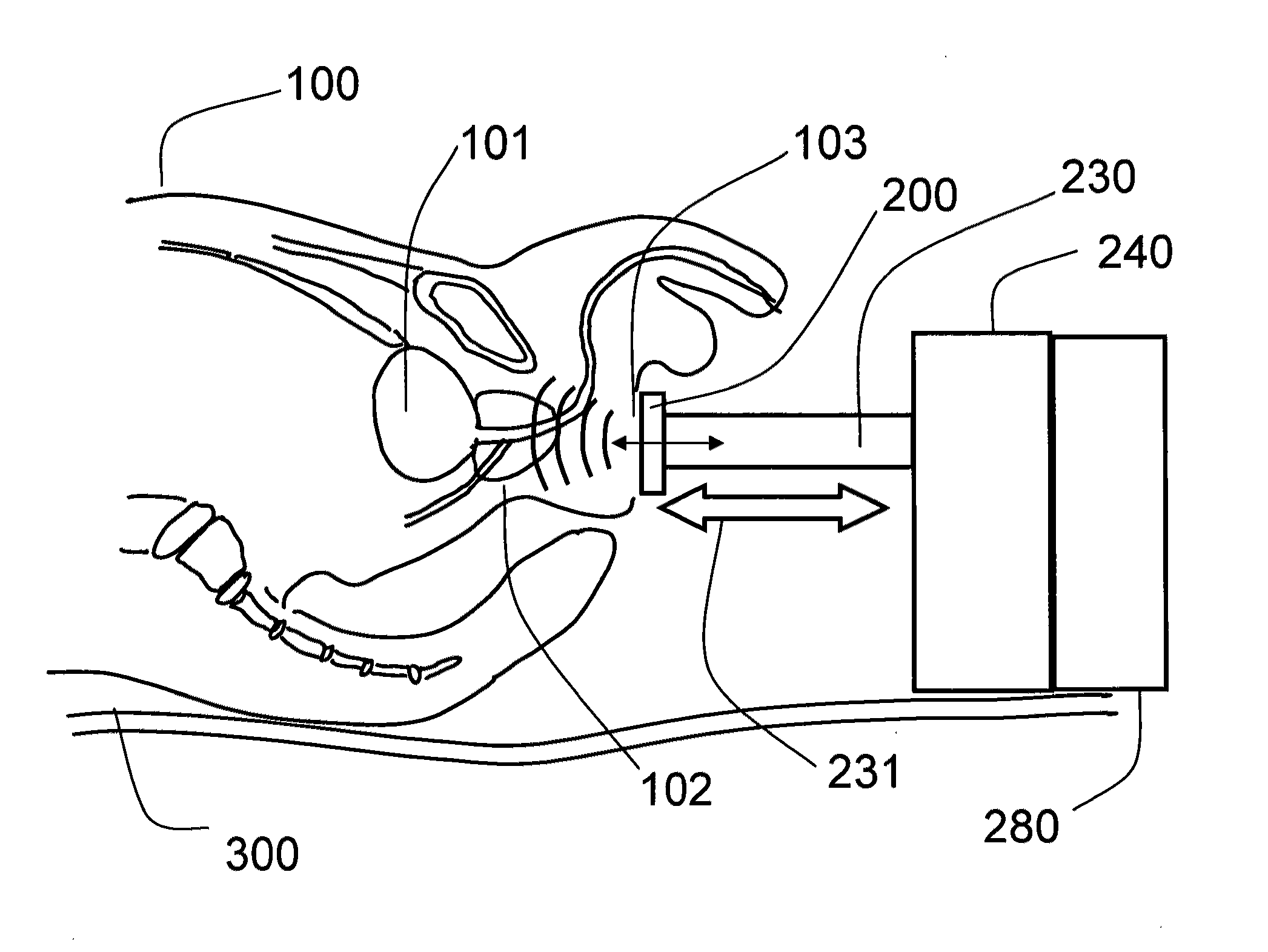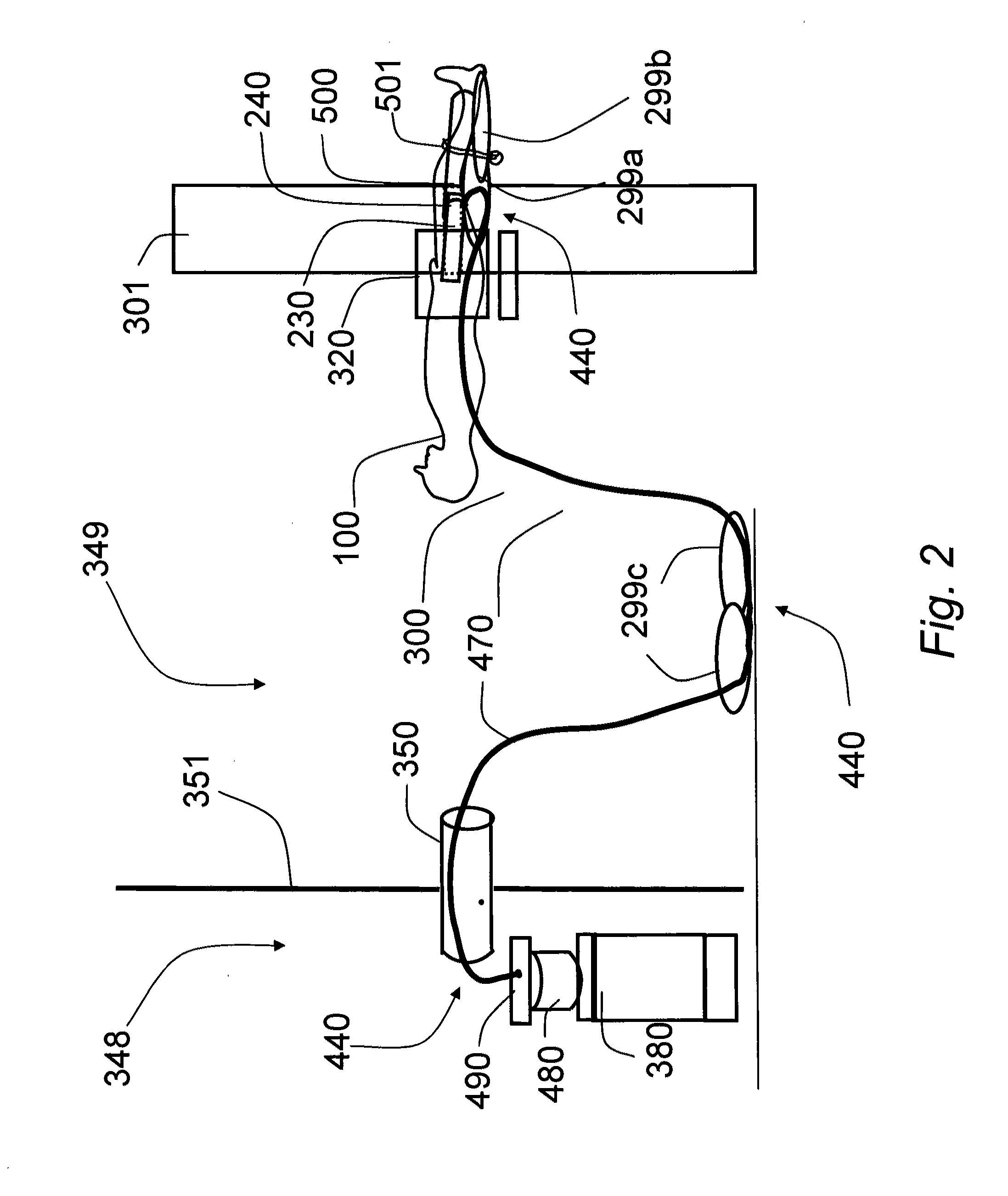Trans-perineal prostate MR elastography
a trans-perineal prostate and elastography technology, applied in the field of diagnostic imaging, can solve the problems of difficult induction of mechanical deformation non-invasively into the abdominal region for elastography imaging, insufficient tissue penetration, and inability to achieve large mechanical shear waves in the prostate,
- Summary
- Abstract
- Description
- Claims
- Application Information
AI Technical Summary
Benefits of technology
Problems solved by technology
Method used
Image
Examples
Embodiment Construction
[0032]The embodiments described herein relate to a method and apparatus of a magnetic resonance elastography (MRE) image acquisition apparatus for the measurement of the mechanical properties of a tissue region in a patient using a mechanical transducer. Particularly, the embodiments relate to inducing or transferring mechanical shear and longitudinal vibrations into the lower abdomen, specifically in the prostate area for male patients. This is achieved by applying a mechanical exciter to the perineal region of the patient that generates mechanical longitudinal vibrations.
Anatomy, Positioning of Exciter at Patient End
[0033]FIG. 1 shows the abdominal section of a patient lying in a typical MR scanner being prepared for a MRE scan. The patient 100 rests in the supine position (facing up) on the table of the magnetic resonance imaging (MRI) scanner 300. The patient is positioned such that the feet enter the MR magnet (feet-first) while the head stays out. In other possible embodiments...
PUM
 Login to View More
Login to View More Abstract
Description
Claims
Application Information
 Login to View More
Login to View More - R&D
- Intellectual Property
- Life Sciences
- Materials
- Tech Scout
- Unparalleled Data Quality
- Higher Quality Content
- 60% Fewer Hallucinations
Browse by: Latest US Patents, China's latest patents, Technical Efficacy Thesaurus, Application Domain, Technology Topic, Popular Technical Reports.
© 2025 PatSnap. All rights reserved.Legal|Privacy policy|Modern Slavery Act Transparency Statement|Sitemap|About US| Contact US: help@patsnap.com



